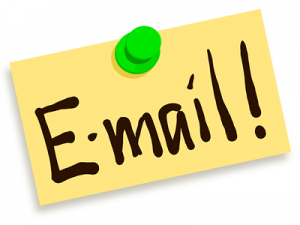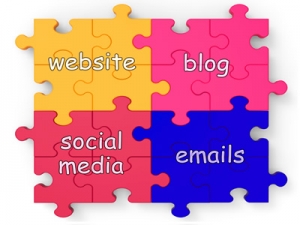 Email validation, while someone is signing up for a membership or a list and email list cleaning after the fact, have always been two sides of the same email marketing security and efficacy coin. Spammers and automated bots become more technologically advanced and sneaky by the day. Consequently, the methods in place for individuals and businesses to check email address information online must evolve. The Internet changes and grows and an ever-increasing number of people access it from mobile devices. As such, the methods used in marketing and security must also step up their game.
Email validation, while someone is signing up for a membership or a list and email list cleaning after the fact, have always been two sides of the same email marketing security and efficacy coin. Spammers and automated bots become more technologically advanced and sneaky by the day. Consequently, the methods in place for individuals and businesses to check email address information online must evolve. The Internet changes and grows and an ever-increasing number of people access it from mobile devices. As such, the methods used in marketing and security must also step up their game.
Check Email Address Data at the Point of Signup
The CAPTCHA system has been used for many years. It tries to ensure that an actual human is signing up for a newsletter or website. This consists of an alphanumeric code that must be typed in in order to process the form. Undoubtedly, this does provide a layer of assurance that the contact information used is real. However, the Internet now offers more advanced possibilities.
Besides type-in codes, graphic options, and the omnipresence verification email a link click method, list owners are stopping automatic sign-ups with mobile phone authentication codes, social media account login association, and hidden fields on sign-up forms called honey pots. Real people do not see them or fill them out, but bots automatically will.
Email Validation for Existing Databases
First, we must ensure that email addresses that enter the database are correct and humans, not bots, control it. However, that does not mean the database will stay pristine forever. Depending on the number of members and general practices of the company or individual who owns the list, other validation processes must take place. Essentially, the list should not contain old, incorrect, and unnatural data.
The primary reason why advances in Internet technology are affecting how people keep a clean list is the extra access to the types of professionals who understand the best practices. In conjunction with being able to hire people with the right talents comes the best applications and verification tools possible. These take on various tasks to remove as many bad email addresses as possible.
These programs that check every email in the database. They also look for particular things that are most likely to indicate false information.
1 – Syntax checks that flag email addresses that are not formatted in any acceptable or allowed way.
2 – Detection of junk or disposable email addresses (DEA). They are often created and deleted by spammers simply to gain access.
3 – Automatic role-based email addresses, like those that start admin, info, or postmaster, are often weeded out as well.
4 – Emails with inaccurate or missing DNS entries will be removed.
5 – Every piece of contact information in the database can be pinged by the system. This is to ensure that email can be delivered to it before one is sent and potentially bounces.
Any automated program may use one or more of these methods but it can be difficult to determine how effective it is or if it works at all without the guidance of the professionals. The average business owner, freelance professional, newsletter publisher, or anyone else who maintains an email list has little ability to perform the task properly. Because the potential problems associated with sending emails to bad addresses is considerable, cut no corners when it comes to email address verification.
Why Email List Cleaning is Vital for Success
Understanding the processes that go into any email validation job help marketers get the best results. However, knowing why helps keep these best practices in place. Before engaging the services of a professional email list cleaning service, a contact database most likely contains quite a bit junk data. This includes old and obsolete email addresses no longer used by the recipients, incorrect and undeliverable information, and false spam bot sign-ups.
When you send out a marketing email, the service attempts to deliver to everyone. None of the above instances will result in a successful delivery. This boosts your bounce rate and can negatively affect your security and ability to send out emails in the future. Services exist that track email sources or domains. Moreover, if there are too many bounces or spam complaints, will blacklist them.
Email validation practiced at both the point of sign-up and afterward must work together to maintain the cleanest list possible. This leads to a greater return on any email marketing investment. Additionally, this ensures a considerably reduced chance of blocked emails, lower bounce rate, and greater levels of success in every campaign.


